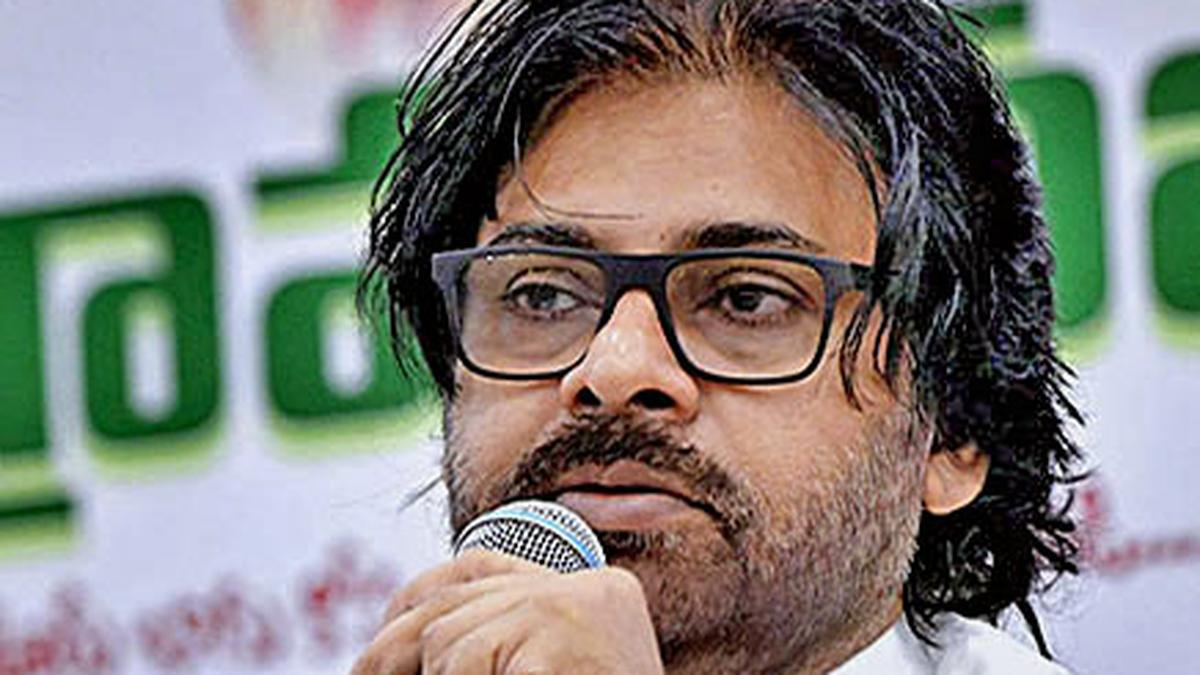When I heard the news of the tragic stampede during a religious event at Tirumala, it stirred deep emotions within me. It’s one of those events that reminds us of the fragility of life and the importance of adequate safety measures, particularly in crowded gatherings where hope and faith draw thousands together. On January 10, 2025, that hope was tragically overshadowed by catastrophe.
The Incident: A Day of Tragedy
On January 10, 2025, a tragic incident unfolded during a religious event at Tirumala. A stampede broke out, leading to the loss of six lives and leaving numerous others injured. It was a day that many would not forget, marked by chaos and sorrow.
Overview of the Stampede
Imagine a sea of devotees, all gathered in devotion, eager to participate in a sacred event. Suddenly, panic ensues. The crowd surges forward, and in a matter of moments, the atmosphere shifts from reverence to horror. This was the reality at Tirumala that fateful day.
- The stampede occurred as thousands attempted to enter the temple complex.
- Reports indicate that the crowd was larger than expected, overwhelming the security measures in place.
- People were pushed and shoved, leading to a tragic outcome.
Immediate Aftermath
In the immediate aftermath, the scene was heartbreaking. Six lives were lost, and many more were injured. Families were left to grapple with the shock and grief of losing loved ones in such a sudden and tragic manner.
Deputy Chief Minister Pawan Kalyan stepped forward, publicly apologizing to those affected. He demanded an unconditional apology from the members of the Tirumala Tirupati Devasthanams (TTD) board. This incident raised questions about accountability and the measures taken to ensure the safety of devotees.
Emotional Reactions
The emotional toll on attendees and families was palpable. Many expressed their grief and anger. How could this happen during a time meant for worship and reflection? The anguish was compounded by the loss of life. Families were shattered, and the community was left to mourn.
"This tragedy has deeply affected us all; we must learn from it to ensure it never happens again." - BR Naidu
BR Naidu, the TTD Board Chairman, also issued an apology on behalf of the board. He expressed sorrow for the losses but insisted that the board had made all necessary arrangements for the devotees. This statement sparked further debate. Were the arrangements truly adequate? Or were they simply not enough?
Details Leading Up to the Incident
Leading up to the stampede, there were signs that the event might draw a larger crowd than anticipated. The religious significance of Tirumala attracts thousands each year. Yet, despite the known popularity, the safety measures seemed insufficient. Questions loomed about crowd management and the protocols in place to handle such a large gathering.
Repercussions and Changes
In the wake of the tragedy, significant repercussions followed. Several individuals within the TTD organization faced disciplinary actions. DSP Ramana Kumar and Gosala director Harinadha Reddy were suspended. Additionally, key personnel changes occurred, including the transfers of Tirupati SP Subbarayudu, TTD JEO Gouthami, and Chief Security Officer Sridhar.
This incident has sparked discussions about safety protocols. How can we ensure that such tragedies do not happen again? The need for improved crowd management and safety measures at religious sites has never been more urgent. The lessons learned from this incident must be applied to future events.
Political Ramifications
The tragedy also brought political figures into the spotlight. Pawan Kalyan and BR Naidu found themselves at the center of a storm, each navigating the delicate balance between accountability and public sentiment. Naidu later clarified his earlier remarks, stating that his comments were aimed at broader criticisms circulating on social media, not specifically directed at Kalyan. This clarification highlighted the complexities of public discourse following such a tragedy.
As we reflect on this day of sorrow, it is clear that the community must come together. We must advocate for better safety measures and ensure that the memories of those lost are honored through action. The hope is that this incident will lead to a safer environment for all who wish to partake in the sacred traditions of Tirumala.
The Response from Authorities and Public Figures
On January 10, 2025, a tragic incident unfolded during a religious event at Tirumala. A stampede resulted in the loss of six lives and left many injured. In the aftermath, the responses from authorities and public figures were swift and significant. Let’s break down the key reactions from Deputy Chief Minister Pawan Kalyan and TTD Board Chairman BR Naidu.
Pawan Kalyan's Public Apology
Pawan Kalyan, the Deputy Chief Minister, took a bold step. He publicly apologized to the affected individuals. But it didn’t stop there. He demanded an unconditional apology from the Tirumala Tirupati Devasthanams (TTD) board. This demand was not just a formality; it highlighted the need for accountability. Kalyan’s stance raised questions about the responsibilities of public officials in such tragic events. What does it mean for the leadership when such incidents occur?
His apology was heartfelt. It resonated with the families affected by the tragedy. In times of sorrow, a simple “I’m sorry” can carry immense weight. Yet, Kalyan’s call for accountability suggests that he believes more is needed. It’s not just about expressing regret; it’s about taking responsibility. This brings us to the political implications of his actions. Could this be a strategic move to gain favor with the public? Only time will tell.
BR Naidu's Defense of TTD's Preparations
In contrast, BR Naidu defended the TTD's preparations. He issued a statement expressing sorrow for the losses but asserted that all necessary arrangements were in place for the devotees. He stated,
"Our condolences go out to the families of the victims; however, we did all that was necessary to ensure safety."His comments were aimed at quelling the rising criticism directed at TTD. But did he come off as defensive?
Naidu emphasized that the board had not committed any errors. He firmly reiterated that the arrangements were adequate and that the TTD board should not be held accountable for the mishap. This defense raises questions. If everything was in order, how did such a tragic event occur? Naidu’s remarks were met with skepticism. Many wondered if he was deflecting blame rather than addressing the real issues at hand.
A Timeline of Official Statements and Actions Taken
As the situation unfolded, a timeline of events became crucial. Here’s how things progressed:
- January 10, 2025: The tragic stampede occurs during the religious event.
- January 11, 2025: Pawan Kalyan publicly apologizes and demands accountability from TTD.
- January 11, 2025: BR Naidu issues a statement defending TTD's preparations.
- January 12, 2025: Naidu clarifies his earlier remarks on social media.
- January 13, 2025: Several personnel, including DSP Ramana Kumar, are suspended.
- January 14, 2025: Notable transfers within TTD are announced.
This timeline reveals the rapid response from authorities. However, it also highlights the confusion and differing narratives. While Kalyan sought accountability, Naidu focused on defending TTD's actions. This dichotomy can create a sense of mistrust among the public. Who should we believe?
Political Implications and Public Perception
The political implications of Kalyan's stance cannot be overlooked. His public apology is a powerful tool in the political arena. It positions him as a leader who cares about the people. But it also raises the stakes for TTD. If Kalyan demands accountability, will there be repercussions for those in charge?
Moreover, the significance of public apologies in political contexts is profound. They can either mend fences or deepen divides. In this case, Kalyan's apology might resonate with the public, but Naidu's defense could alienate some. It’s a delicate balance.
In the wake of this tragedy, discussions around safety protocols and management of large gatherings have intensified. This incident serves as a wake-up call. How do we ensure the safety of devotees in the future? What lessons will be learned? The answers to these questions will shape the future of religious events in the region.
As we reflect on the responses from these public figures, one thing is clear: accountability and transparency are crucial. The public deserves to know that their leaders are taking the necessary steps to prevent such tragedies. In times of sorrow, it’s the responsibility of those in power to lead with integrity.
A Call for Change: Improving Crowd Safety Measures
The tragic incident at Tirumala on January 10, 2025, where six lives were lost in a stampede, has shaken many of us. It raises urgent questions about crowd safety at large gatherings, especially religious events. This incident has sparked discussions on how we can improve existing protocols and ensure that such tragedies don’t happen again. In this blog, I want to explore TTD's current crowd control measures, propose enhancements, and discuss the role of digital technology in crowd management.
Examination of TTD’s Existing Crowd Control Protocols
First, let’s examine the current crowd control protocols in place by the Tirumala Tirupati Devasthanams (TTD). According to reports, TTD claimed that all necessary arrangements were made for the devotees. However, the unfortunate events suggest otherwise. Were these measures truly adequate?
- Crowd Monitoring: TTD has systems in place for monitoring crowds, but the effectiveness of these systems is questionable.
- Emergency Response Plans: The incident revealed that emergency response plans may not have been well-executed or communicated.
- Staff Training: How well are staff trained to handle emergencies? This is a critical aspect that needs attention.
These points highlight the need for a thorough review of TTD's crowd control protocols. We must ask ourselves: Are these measures sufficient to protect devotees? The answer seems to be a resounding no.
Proposals for Enhancements Post-Incident
In light of this tragic event, it’s essential to propose enhancements to TTD’s crowd safety measures. Here’s what I think should be prioritized:
- Regular Safety Audits: Conducting regular safety audits can help identify weaknesses in crowd control protocols.
- Increased Staff Presence: More personnel should be deployed to manage crowds, especially during peak times.
- Clear Signage and Communication: Providing clear instructions and information can guide devotees and prevent panic.
- Emergency Drills: Regular emergency drills can prepare staff for quick action during crises.
Implementing these enhancements can significantly improve crowd safety at religious gatherings. We have to remember that
"Safety cannot be an afterthought; it must be built into the very fabric of event planning." - Security expert
The Role of Digital Technology in Crowd Management
Finally, let’s talk about the role of digital technology in crowd management. In today’s world, technology can play a vital role in enhancing safety. Here are a few ways it can be utilized:
- Real-Time Monitoring: Using drones or CCTV cameras can help monitor crowds in real-time, allowing for quick responses.
- Mobile Apps: Developing apps that provide information on crowd density or emergency procedures can empower devotees.
- Data Analytics: Analyzing data from previous events can help predict crowd behavior and improve planning.
Digital technology offers exciting opportunities to improve safety. But are we ready to embrace these changes? The answer lies in our commitment to learning from past mistakes.
Conclusion
The incident at Tirumala has opened our eyes to the urgent need for improved crowd safety measures. We must take a hard look at TTD's existing protocols and make necessary changes. Proposals for enhancements, such as regular safety audits and increased staff presence, are essential. Moreover, embracing digital technology can significantly enhance our ability to manage crowds effectively. It's time to prioritize safety, ensuring that tragedies like this never happen again. Together, we can create a safer environment for everyone attending large gatherings.
TL;DR: The stampede at Tirumala not only resulted in loss of life but has prompted vital conversations on crowd safety and public accountability.



